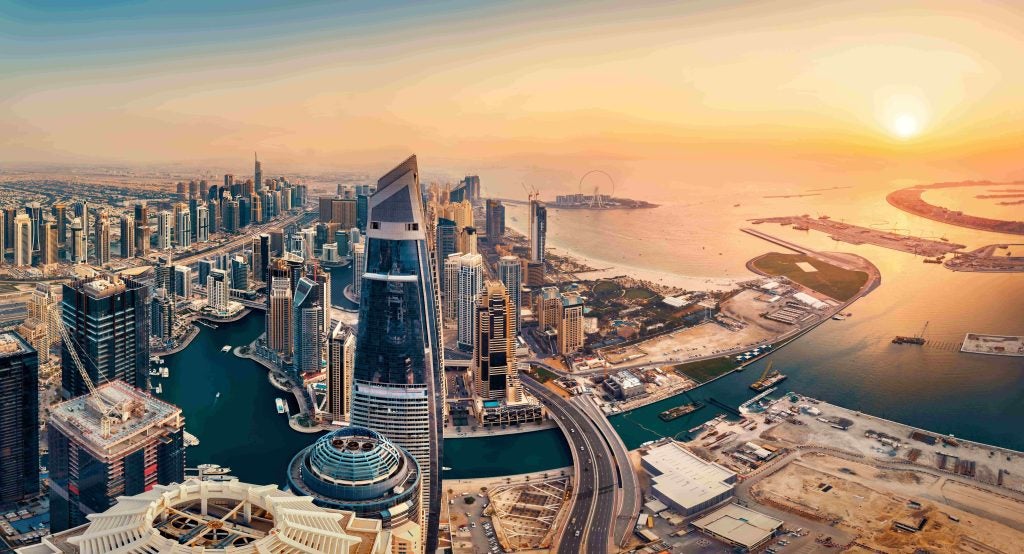Talk around impact investing and ESG has been increasing in recent years, but is 2020 the year that it finally breaks through? A number of private banks have noted that clients are looking at being more ‘conscious’, but how far does this go? Patrick Brusnahan reports.
The news is dominated by global warming, climate change and sustainability. Consumers are more aware of this, and this is changing their spending and purchasing habits.
According to Julius Baer in its inaugural Global Wealth and Lifestyle Report, consumers are becoming more mindful. Younger adults in particular are quick to suspect dishonesty in corporate leaders, and want more transparency on the origin of goods.
While the report claims that this movement originated in the West, it is clearly not confined to that region – it merely had a head start. The report states: “Conscious consumption stands in proximity to conspicuous consumption. It does not say that the latter is bad or irresponsible – capitalism itself is not a foe – but it does ask that we try harder.”
Speaking to PBI, Ed Raymond, head of portfolio management UK at Julius Baer, says: “The way that we convince clients is that I think each individual has a responsibility. And we have a corporate view; we stand behind our corporate view and we stand for responsible banking.”
Raymond continues: “This has been running for a very long time; it’s been running for certainly for as long as I’ve been at the bank, which is five years. I’d say that we have been quite early into it because it’s what the firm stands for, and we have the foundation.”
How well do you really know your competitors?
Access the most comprehensive Company Profiles on the market, powered by GlobalData. Save hours of research. Gain competitive edge.

Thank you!
Your download email will arrive shortly
Not ready to buy yet? Download a free sample
We are confident about the unique quality of our Company Profiles. However, we want you to make the most beneficial decision for your business, so we offer a free sample that you can download by submitting the below form
By GlobalDataIn its investment outlook for 2020, UK-based Coutts also highlights responsible investing. Mohammed Kamal Syed, head of asset management at Coutts, says: “We are always looking beyond short-term horizons to the long-term challenges that will shape our investment strategy and our future. As responsible investors we know we can do more than just focus on numbers – working with our clients we can create a better world.”
Paul van Zyl, co-founder and chief creative officer at social change members club The Conduit, adds: “I think the two greatest challenges of our time, we have to reconcile them fast.”
Speaking to PBI, he explains: “They will only be reconciled if the private sector and government act in concert. The two great challenges of our time are our zero-carbon economy; that has to happen in the next two decades. And the second is dealing with structural inequality.”
Generational Generosity?
It is often claimed that millennials are the leaders of ethical causes. However, they may not always practise what they preach.
For example, fast fashion is popular with younger consumers, but leads to immense amounts of waste in production and disposal of unsold stock. Younger consumers, according to the report, tend to value experiences just as much as physical things or possessions.
ZenithOptimedia studied 6,000 millennials across 10 countries, and found that they wanted to become ‘problem-solvers’ or ‘decision-makers’. They have less time for more traditional priorities such as getting married, having children or buying a house.
This can vary by region, as a fifth of Chinese millennials consider being ‘well travelled’ as a major feature of adulthood. Only 9% of millennials worldwide thought the same.
On the other hand, wellness seems to be a higher priority for those slightly older, due to cost. For those in their 40s, 50s or older, the luxury wellness market is growing in scope. The Global Wellness Institute states that the sector is growing at 6% per year, double the rate of average global GDP. No single region dominates the industry, but it is already worth $4.2trn.
Norbert Rücker, head of economics and next-generation research at Julius Baer, says: “Climate change and our individual impact is a complex topic, and it is very human to seek simple, painless solutions.”
Nicolas de Skowronski, head of wealth management solutions and member of the executive board at Bank Julius Baer, adds: “Our analysis reveals the growing desire among consumers to balance their buying decisions with their social, environmental and political convictions.
“This began with the millennials, but the baton has definitely been passed down the generations now. Even Generation Alpha is getting involved, as I know from personal experience. The conscious consumer is here to stay, and we see a fast evolution of existing offerings and major investments into innovations across industries as a response to this growing demand.”
Regional Change
The majority of citizens across the world (81%) feel strongly that companies should do more to help the environment, according to the Conference Board Global Consumer Confidence Survey.
This figure is seemingly higher in emerging economies such as Africa and the Middle East (88%) and Latin America (94%); in North America, it is only 69%.
Latin America sees this as a high priority probably due to recent man-made disasters. The burning of the rainforest in Brazil has garnered numerous front pages in the last year. In addition, there was the collapse of a mining dam and an unfinished investigation into the state energy company and bribery. These all suggest that urgency is required.
For Raymond, the disparity in the figures was unexpected. He says: “I think that was the one thing for me; the biggest surprise out of this. I would not have expected it, and I think that is down to the proximity of more emerging markets to those issues – much more than the developed world.”
Furthermore, the majority of Latin Americans stated that they would check if the manufacturer of a product had a focus on sustainability measures. In Asia, Indonesians, Indians, Malaysians, Thais and Filipinos are the most inclined to choose a product based on whether it is fair-trade or environmentally friendly; by contrast, consumers from New Zealand and Australia are the least likely to do so.
In North America, consumers are less willing to pay a premium for more ethically sourced products. Similarly in Europe, respondents to the Conference Board Global Consumer Confidence Survey were less willing to pay a premium, but then they already have strict environmental processes in place for goods, so being a responsible product is not necessarily a USP.
Raymond concludes: “No one company or one individual can do this on their own. We need to pull together, think together and act together in such a way to have that impact, which will be far greater than any individual company or person thinking and looking at anything else.”
Most Expensive Cities
The Global Wealth and Lifestyle Report also looked at cities across the globe to see which costs more, and where. Asia turned out to have five of the 10 most expensive cities – of the 28 surveyed – including the top three. Strangely, the cheapest to live in, Mumbai, was also in Asia.
The world’s most expensive city is Hong Kong. It ranks above the 90th percentile for property, beauty services, fine dining, business class flights and lawyer fees.
Shanghai came second, and while cheaper than Hong Kong for property and hotels, it is expensive for portable goods such as watches and ladies’ handbags. Services, such as lawyers and personal training, are also expensive.
Mumbai offers value across almost all items. The wealthy have access to property at around a 10th of the price of the most expensive city, and wellness services are among the cheapest. Personal trainers and wedding banquets are also a 10th of the price than in the most expensive city.
European cities were noted for offering the best value. The best for luxury living were Barcelona and Frankfurt. London is the priciest city in the continent, with Zurich a close second.
Capital of Spanish province Catalonia, Barcelona was at or below the average cost for almost every luxury item, such as ladies’ handbags and men’s suits. Residential property is only 9% the cost of the most expensive city for the category.
London, the most expensive city in Europe, provided a decent level of value for travellers; however, residential property was twice the cost of the average, but still only half the price of Monaco.
In the Americas, the most expensive city is New York, which placed fourth globally. Most portable luxury items are above the global average; however, luxury cars, pianos, wine and whisky are below the global average for cost. New Yorkers also pay the most worldwide for personal trainers and wedding banquets.
Rio de Janeiro is the most expensive city for five sectors: watches, ladies’ handbags, jewellery, whisky and fine wine. Men’s suits, pianos and business class flights are also costlier than the global average; however, residential property is only 7% the cost in Monaco and a third of the global average. There is also no sign of it becoming more expensive anytime soon, according to the report, as housing demand and price growth in real terms have been “tepid” over the past few years.
Rajesh Manwani, head markets and wealth management solutions – Asia-Pacific at Julius Baer, says: “The inaugural edition of Julius Baer’s Global Wealth and Lifestyle Report showcases the trends in high-end consumption around the world, which are of relevance to our clients. The methodology was pioneered in Julius Baer’s Wealth Report Asia, which has been issued since 2011. For the first time, it has now been expanded to include 28 cities globally. We hope these findings will shed insight on global lifestyle trends in 2020.”
Sustainable Investments
Private banking clients and HNWIs still want their luxury items, but how can somebody make that responsible and sustainable?
Real estate and property are big and popular investments for many private banking customers. According to the World Green Building Council, building and construction account for 40% of all carbon emissions. Therefore, ‘green building’ has become a rising trend, and is particularly big business in the US, where around a third of the construction sector is based on this template.
Currently, few prime property buildings have fully green credentials, but may become more energy-efficient once built.
Regulation has helped in this area. In Singapore, the Green Building Council has implemented changes such as improving energy and water efficiency using eco-friendly materials and building healthier indoor spaces. The city-state also offers incentives for higher green building ratings.
In South Africa, Green Building Star certification has been awarded to 400 building since its establishment in 2007. According to the Green Building Council in South Africa, the cost premium of building such sites has fallen from 5% to 3% in the last three years.
The luxury car space is also trying to become more environmentally friendly. According to Julius Baer, the Americas offer the best value in this sector, with an average cost of $117,174; Asia-Pacific is the highest, at $211,722.
Hybrid and electric cars are gaining popularity, and while there are significant benefits, such as cost, setbacks remain. The report explains: “The running costs of electric vehicles are markedly lower than internal combustion engine vehicles. Maintenance and repairs will also be dramatically cheaper, and less frequent.
“Up to half of car maintenance is attributable to the internal combustion engine, which contains hundreds of moving parts, whereas solid state systems and electric motors typically have fewer than 10.”
It continues: “The main barrier to faster take-up is battery technology, which limits the distance electric cars can go between charges, dubbed ‘range anxiety’. Two to three hundred kilometres is the current maximum, depending on how the car is driven.”
Sustainable investing, such as impact or ESG, is gaining prominence in the private banking sector; however, the pace of change needs to accelerate. There are signs that it is, especially as sustainable investments show greater chances of turning a profit.
Ultimately, the sector and its investors need to keep moving in this direction before there is nothing left to invest in.







